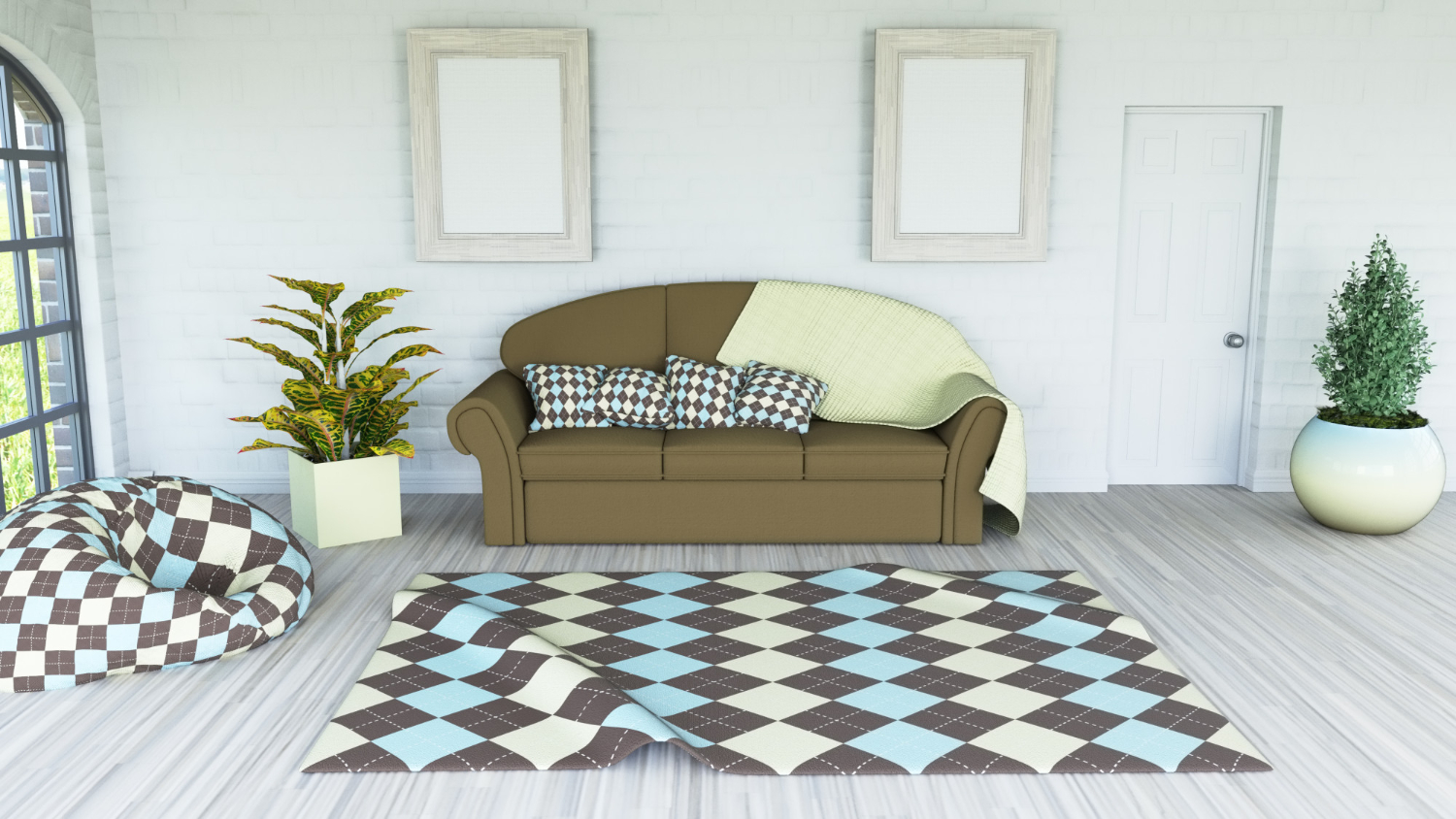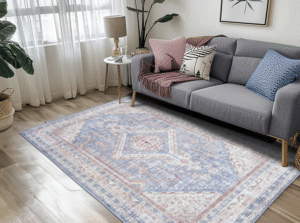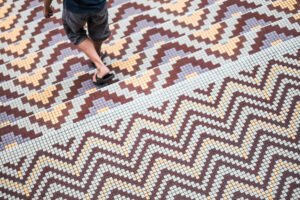Geometric oriental rugs are stunning pieces that can define a room’s aesthetic, with intricate patterns and vibrant colors providing the foundation for creating an eye-catching interior design scheme. But many homeowners struggle when selecting art to complement these bold floor coverings. This guide explores various art styles and mediums that pair beautifully with geometric oriental rugs so you can achieve a cohesive and visually arresting space.
Abstract Art: A Natural Complement:
Abstract art is an excellent choice to pair with geometric oriental rugs. The free-form nature of abstract pieces can provide a counterpoint to the structured patterns of the rug.
Consider searching for abstract works that incorporate some of the colors found in your rug for a cohesive aesthetic. Large-scale abstract paintings make an impactful focal point above a sofa or fireplace, while smaller pieces can be grouped to form an eclectic gallery wall.
Consider including artwork by Wassily Kandinsky, Piet Mondrian or contemporary abstract artists featuring geometric forms and vibrant hues in your room as artful additions that complement its motif while adding modern flair. These pieces can add modern sophistication while echoing the rug motifs as a modern focal point in the room.
Minimalist Art: Creating Balance:
Minimalist art can provide a relaxing contrast to intricate oriental rug patterns. Simple line drawings, monochromatic paintings or sculptures with clean lines can bring visual relief without overshadowing any area in which they’re displayed.
Artists like Agnes Martin, Donald Judd or Sol LeWitt are known for creating minimalist works that pair beautifully with geometric rugs. Their art adds contemporary edge while still allowing the rug to remain the star of the show.
Photography: Capturing Contrast –
Black and white photography creates an eye-catching contrast against the vibrant patterns of an oriental rug, especially architectural photography highlighting its geometric forms or landscape photography that provides depth and perspective in any room. Alternatively, color photography that picks up on the hues in your rug can create a cohesive look. Look for images with strong compositional lines or geometric elements that complement the rug’s design.
Traditional and Classical Art: Embracing Heritage –
If your geometric oriental rug is part of more traditional decor scheme, classical art can make for an excellent addition. Oil paintings featuring landscapes, still lifes or portraits will bring timeless elegance into any room and should feature vibrant tones that complement those found within your rug. Look for works with rich tones which complement its colors.
For a more direct connection to the rug’s origins, consider art from the same cultural heritage. Persian miniatures, Ottoman calligraphy, or Islamic geometric art can create a thematic link with your rug and add depth to your decor story.
Modern and Contemporary Art: Creating Contrast –
For a bold, eclectic look, pair your geometric rug with modern or contemporary art. Pop art’s vibrant colors and geometric compositions create an eye-catching dialogue with rug patterns, including those by Andy Warhol, Roy Lichtenstein or Keith Haring whose works add energy and excitement to any room they decorate.
Contemporary sculptures or installations that focus on form and negative space can also make great additions. These can provide a three-dimensional element that contrasts beautifully with the flat patterns of the rug.
Textile Art: Texture and Pattern Play –
Textile art can create an interesting interplay of textures with your geometric oriental rug. Consider wall hangings, tapestries, or fiber art pieces that complement or contrast with the rug’s patterns. Look for works that use different weaving techniques or materials to add visual interest. Artists such as Sheila Hicks or Anni Albers are known for creating stunning textile pieces that could go perfectly with geometric rugs. Their pieces add texture to walls while reflecting on the craftsmanship of your rug.
Tips for Successful Pairing –
Color coordination: Choose art that picks up on one or more colors from your rug. This doesn’t mean exact matching – complementary or analogous colors can work beautifully. Scale matters: Ensure your art is proportionate to both the rug and the wall space. A large rug can handle oversized art, while a smaller rug might pair better with a gallery wall of smaller pieces. Balance patterns: If your rug has a busy pattern, consider art with simpler compositions, and vice versa. This creates visual balance in the room.
Consider the room’s purpose: For example, living rooms and studies require more contemplative pieces; on the other hand, dining rooms could accommodate bolder artwork that inspires energy.
Trust Your Instincts: In the end, the best pairings are those which resonate with you personally. Don’t be afraid to experiment and choose pieces which speak directly to you.
Wrapping up for Geometric Oriental Rug:
Arranging art with your geometric oriental rug provides a wonderful opportunity to craft an inviting space that speaks volumes about who you are. No matter your aesthetic – abstract statements, minimalism or classical pieces – there is sure to be the ideal piece to complement both pieces, creating a balanced and intentional space where both can shine! With these guidelines as your guidepost, selecting artwork that complements and elevates any room will be easier.





